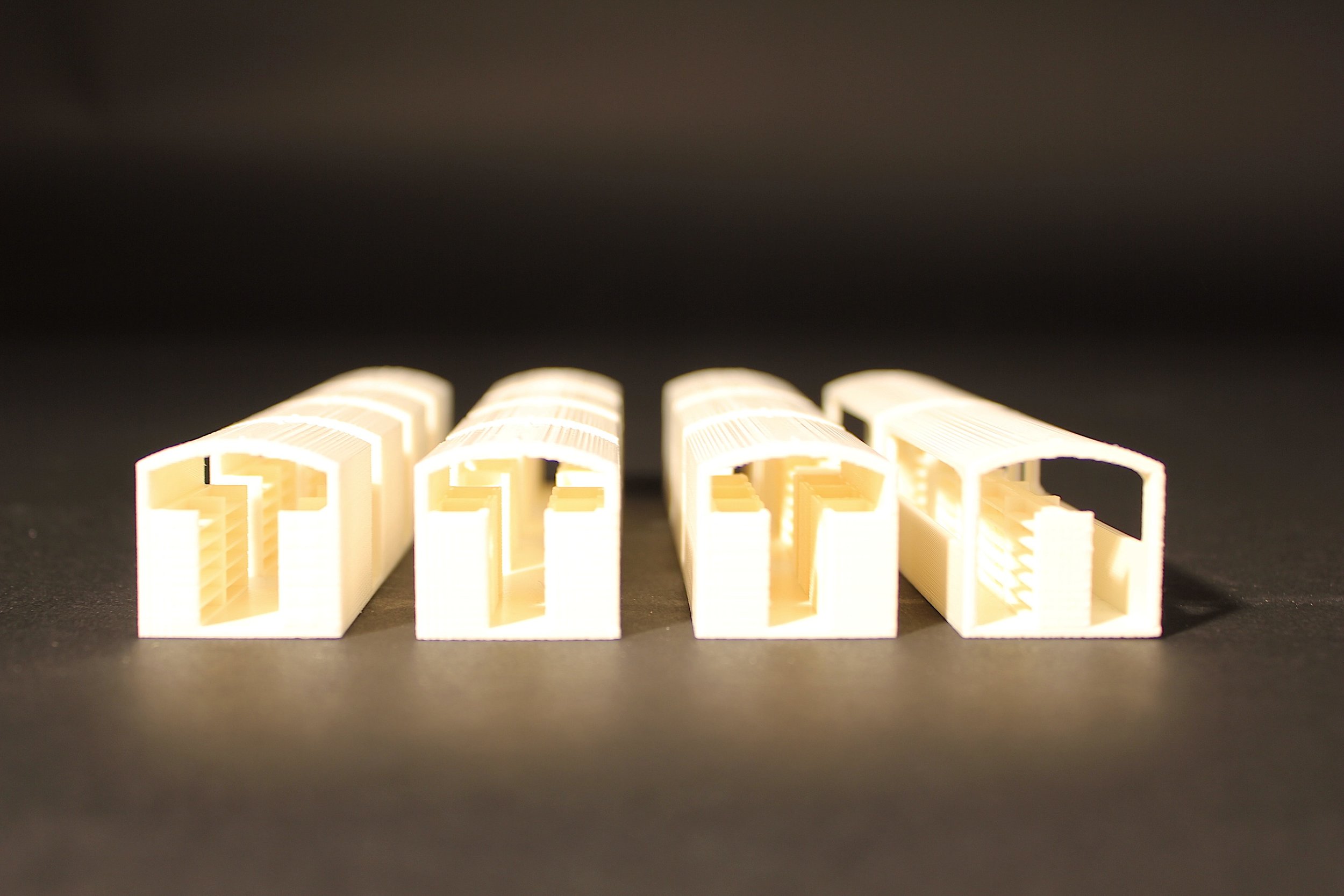Project 3: Urban Intervention
HAA 96B Architecture Studio II: Connections
Grocery Vending Cars
Grocery Vending Cars seek to improve access to grocery and produce in food deserts, as well as to provide convenient one-stop shops for household items such as OTC medicine, cosmetics, and cleaning supplies.
A food desert exists when there is difficulty to access supermarkets and obtain affordable fresh, healthy food. Urban low-income neighborhoods are particularly affected. GVCs take the form of subway cars, as rapid transit connects pockets of urban neighborhoods and is used during commute to work. GVCs would be particularly helpful for parents who work multiple jobs and lack the access and time to shop for food and other necessities.
Twelve models for GVC layout are explored, varying in number of entrances, vending machine design, and window placement. The different layouts result in a range of single-level shelf space of 144 to 304 sqft, and walkway space of 236 to 396 sqft based on a 60 ft x 9 ft subway car. These options are provided so that each rapid transit system can select an optimal layout depending on level of traffic, population preference, and other factors.
Model #4 and Model #10 are compared below:
Model #4
Model #4
Model #10
Model #10











